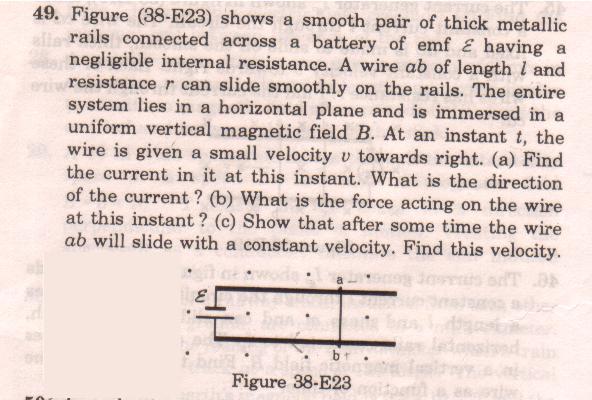small velocity just means that initialy Emfinduced or u call motional emf will be low...so motion will be accelrated...due to which velocity will become larger..after that termainal velocity attained...and aftre that decelration when motiional emf >E

Doubt is that must E always be greater than vBl
Although it has mentioned v is small, but B and l may be large enuf to be greater than E,
So the answers will differ.
IS my logic correct?
-
UP 0 DOWN 0 0 7

7 Answers
vel may be small but motional emf may exceed E cant it becasue motional; emf = vBL so even if v is small B and L may be large enuff.
In that case the directions will reverse in the questions act.
H'mmm, well interestingly, in that case for some velocity, the net emf in the circuit will turn out to be 0!
I've done this before...but its not striking me as cleanly. Lets see..
The wire moving with a velocity v to the right in magnetic field B will have some emf of its own...if we could interpret the wire ab as having a potential drop, we could have a two battery circuit with emfs E and Bvl. Net emf becomes E - Bvl....resistance given is r.
I = (E - Bvl)/r , in the direction b to a.
The force would obviously be F = I l B sintheta, where sintheta = 1.
So F = I l B = (E - Bvl) l B/r
After some time t, E will equal Bvl as a maximum, and thus v = E/B l.
So indeed when the wire moves with constant velocity v = E/B l then the net emf becomes zero.
Make some sense?